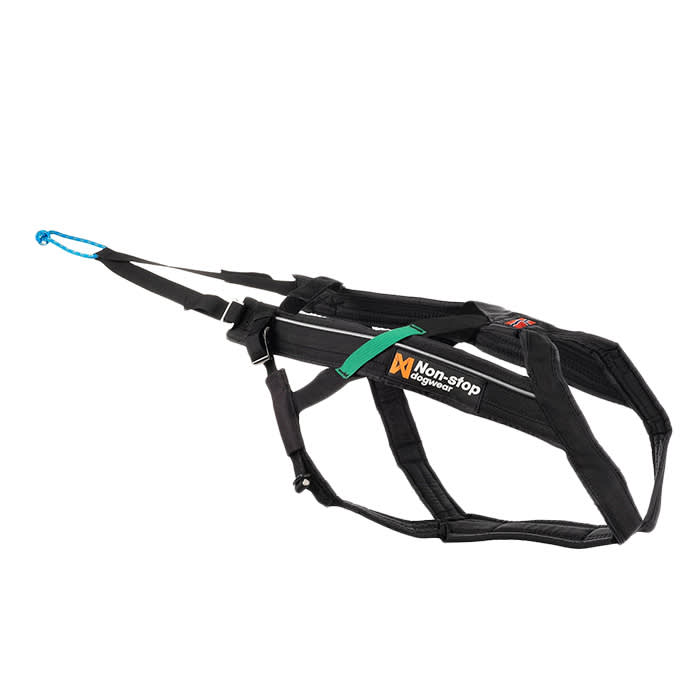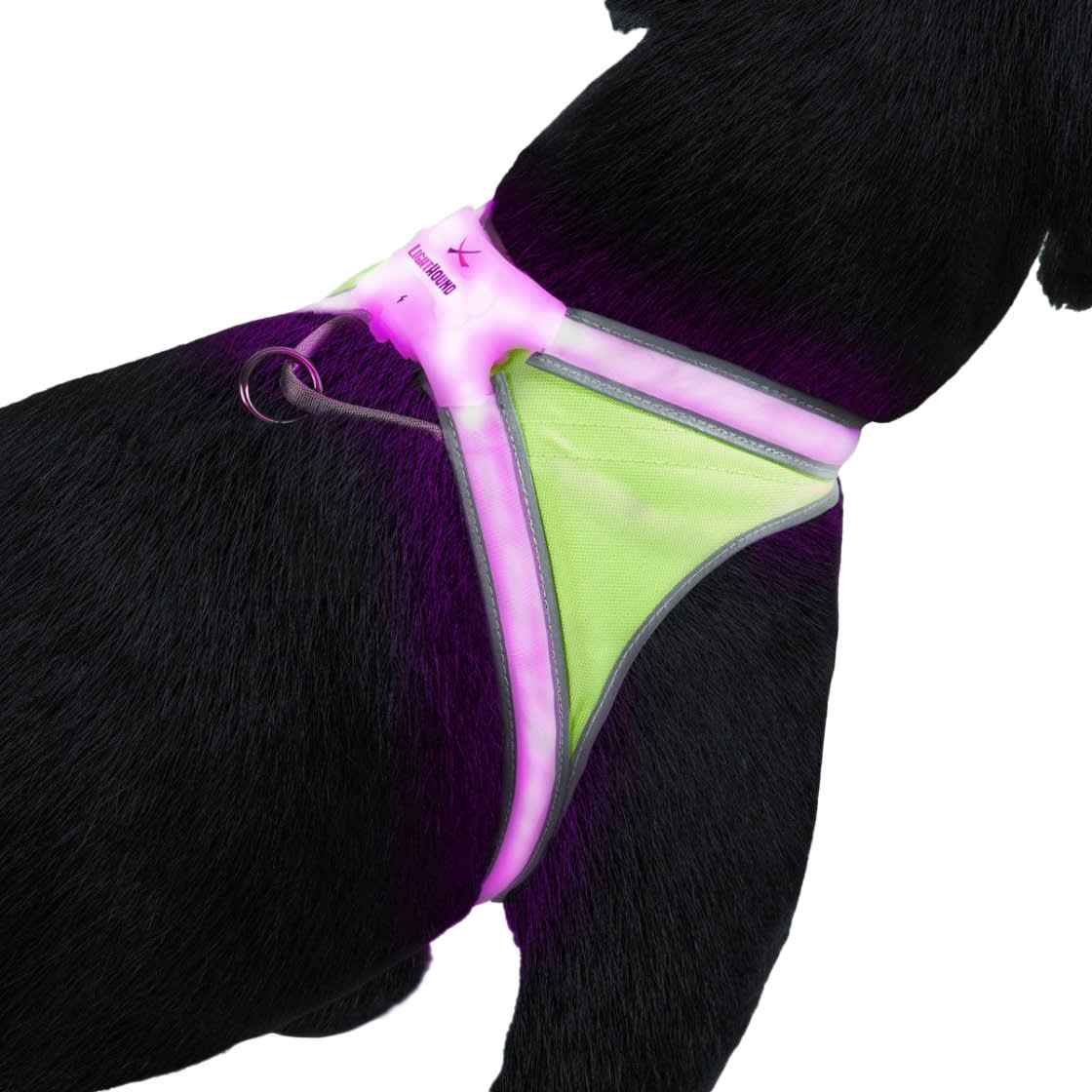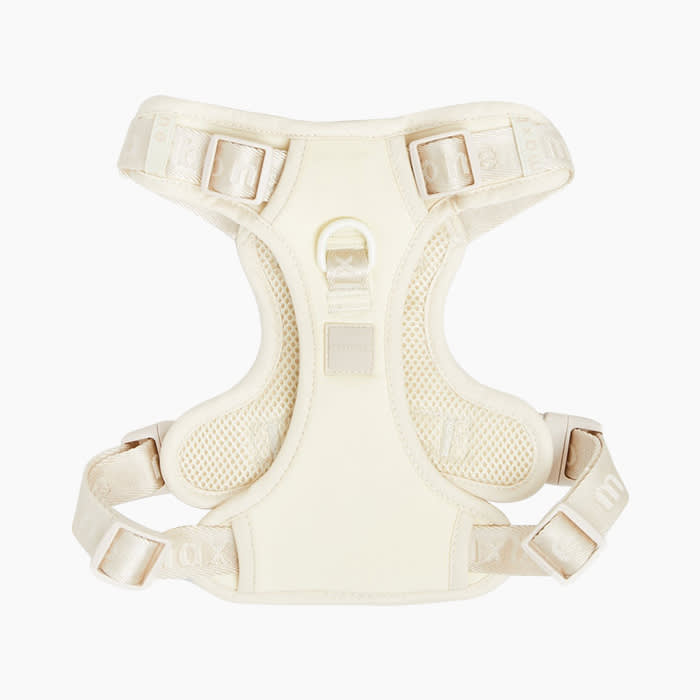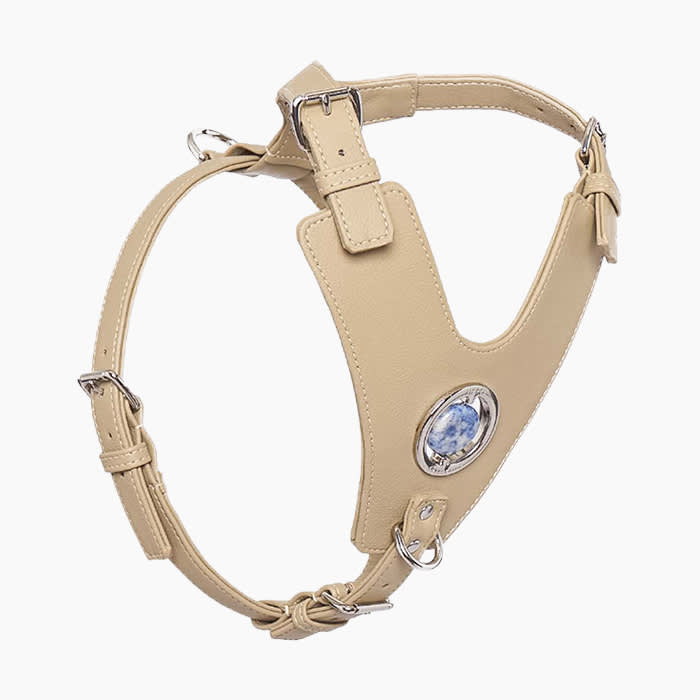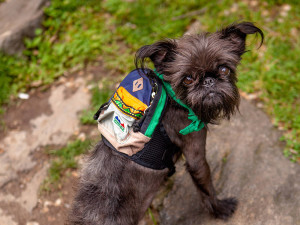The Best Dog Harnesses of 2025
Experts pick the best harnesses for every kind of dog—from flat-faced breeds to tiny teacups to escape artists.

Share Article
In This Article:
Safety and Fit The Best Dog Harnesses of 2025 No-Pull Harness Designs Activity-Based Dog Harnesses Durable Harnesses Stylish Harnesses
As all dog parents know — or quickly find out — there are certain life hacks that become essential to raising your pup. Sometimes, those life hacks are simple products that become so important to you and your pet that you latch onto them like a toddler with a stuffed animal.
This is especially true when you’re on a walk together and exposed to all of the dangers of the outside world: loud noises and other stimuli, cars zooming past, and — our personal favorite — passersby who don’t respect your pup’s boundaries. That’s where a harness comes in handy.
The benefits of using a harness
Dog harnesses are enormously useful because they can give you more control over your pup’s behavior while releasing them from the restriction of many traditional collars. They’re comfier than collars for some dogs, especially if they strain their necks against their collars, and there are a variety of types to choose from — whether you need to reduce pulling, keep your pup from escaping during walks, or just up your pup’s style game.
There’s a lot to consider before investing in one, though. Veterinarian and Kinship Collective member Dr. John Iovinoopens in new tab advises looking for a first-time harness by “paying attention to size — with younger dogs especially, getting something adjustable, something they can grow into. From there, getting something that’s durable and sturdy.”
In terms of material, Annie Grossman, owner and co-founder of School For The Dogsopens in new tab, recommends a harness with “velvet-lined underarm straps, which can reduce chafing.”
Safety and fit
While it goes without saying that the best harness for a five-pound Terrier is likely not the best one for their Great Pyrenees counterpart, that doesn’t mean that the way you fit a harness to your pup isn’t worth examining. Just as you wouldn’t buy yourself a pair of shoes two sizes too big, you wouldn’t buy your dog a harness that hangs off them like a poorly tailored jacket (your veterinarian will also tell you about the dangers of that).
Taking into account your dog’s potential for growth (are they in puppyhood or adulthood?), their temperament (are they anxious for attention or aloof?), and their nature (are they skittish or calm?) is the most foolproof way to ensure that their harness is correctly fitted.
Dr. Iovino recommends that “making sure that [the harness] is pretty snug. If it’s too loose, dogs can get spooked, and then they’re out of their collar or their harness, so it’s really important to make sure that it’s not too loose.”
Alternatively, he shares that many dogs have been using the same harness or collar since they were first brought home. “I’ve had a few dogs grow into their harnesses, or even their collars, and clients don’t realize, and you go to feel it, and it’s so tight. They grow fast, so it’s something to be aware of.”
Finding a happy medium between the control of a harness that fits snuggly and the comfort of a looser fit is something that can easily be established by the good old-fashioned two-finger test. Dr. Iovino instructs: “You still want to be able to fit two fingers between all the areas that the harness is contacting.”
Meanwhile, Grossman warns against using harnesses that aren’t fitted properly: “A harness should be snug but not tight. You want to be able to comfortable put a couple fingers between the harness and your dog when it’s on.” Having a properly fitted harness will help prevent dogs from injury and removes the potential of escape.
Front vs. back leash attachment
Where your dog’s leash clips on their harness is mostly a matter of personal preference, but the options each have distinct advantages and disadvantages. For example, a front clip effectively allows you to lead stubborn, walk-resistant dogs forward, but it’s notably a terrible idea for small dogs who are lower to the ground and will cause the leash to drag.
Dr. Iovino recommends looking for a harness with a back attachment. “It’s just more practical when they walk and sniff, especially if you have a short dog. It’s a lot easier to keep the leash above ground and just a little bit of tension when it’s hooked on the back than the front,” he says.
Murri also makes a case for when a dual-clip harness may be beneficial: “My favorite harness, and the one that I use with my dog, is the Freedom harness. I like the harness because it has two points of attachment. It has one on the chest and one in the back. The one in the back has a martingale on it, which has a little loop that gets tighter every time the dog pulls so it makes it harder for the dog to slip out of it.”
Over the head vs. step-in
Getting your dog in their harness shouldn’t be complicated, and if it feels like you’re untangling a necklace, there’s a good chance it’s not the most streamlined design. While the choice is entirely yours, many veterinarians recommend introducing your dog to the concept of a harness before you begin your hunt for the one.
“I would just expose the dog to a normal basic harness at first,” Dr. Iovino advises. “My dog just kind of knows now. She feels the collar part go over her head and instantly lifts her leg. If you just do that repetition on a basic harness, getting it on and off should be just as easy.”
From there, you can choose the harness to your and your pup’s liking — whether that be one that is placed over their head, clips on after being slipped on the legs, or snapped and Velcroed on the chest.
While Murri doesn’t have a preference toward any particular method, she advises us on the dangers of step-in harnesses. “I mean the easiest one obviously is the step-in harness, but the problem with that is if you get a fearful dog and the dog gets scared of something they start pulling away, they can slip out of that harness really easily,” she warns. ”Before you even realize, the dog is going to be gone.”
The Best Dog Harnesses of 2025
With all this advice in mind, it’s time for you to get shopping. Below are our picks for the best dog harnesses, depending on you and your pup’s specific needs.
No-pull harness designs
For heavy pullers, the following designs are ideal.
Best no-pull dog harness
Best dog training harness
Activity-based dog harnesses
If you have an active adventure dog, there are harnesses designed for practically every pup activity under the sun.
Best dog harness for running
Best dog harness for hiking
Best weatherproof dog harness
Best reflective dog harness
Best dog harness for cars
Durable harness
Regardless of your and your pup’s levels of activity, having a harness that your dog can wear without wearing it down is paramount. A harness that’s particularly sturdy — holding up to tugging, biting, and handling — is a major plus.
Best durable dog harness
Size, build, and age
One of the most important parts of a harness may seem the most obvious: the fit. For super large or super small dogs (including puppies), finding the right harness can be a little trickier. The options below have you covered, regardless of your pup’s size or build.
Best dog harness for small dogs
Best dog harness for large dogs
Budget dog harness
For pet parents who can’t splurge at the moment, there are less pricey options that are just as safe for your pup.
Best budget dog harness
Stylish harnesses
There’s no reason why a safe, comfortable harness shouldn’t also be super chic.
Best colorways
Best fashion-forward dog harness
Best personalized harness
Sustainable harness
The only thing better than finally finding the perfect harness for your pup? Finding the perfect harness for your pup that also happens to be good for the planet.
Best sustainable dog harness
Best comfort dog harnesses
Your pup deserves to feel like they’re strapped into a cloud. The harnesses below are designed with your pup’s comfort as the top priority.
Best padded dog harness
Best comfort fit
Best calming dog harness
FAQs (People Also Ask):
Is a harness better than a collar?
Harnesses can be better for some dogs because they can alleviate back pain and stop a heavy-pulling pup from pulling a collar against their throat. Harnesses can also provide more control to pet parents.
How do you put on a dog harness?
Different dog harnesses are put on dogs in different ways; some go over the head, while others are step-in or clipped on around the chest and limbs.
Is it OK to keep my dogs harness on all of the time?
If a dog wears a harness continually, it can cause chafing and discomfort.
What is the best material for a dog harness?
The best material for dog harnesses depends on your dog’s needs. Breathable mesh can prevent overheating, while nylon and leather are super durable.
References:

Avery Felman
Avery is a writer and producer. She has written for numerous publications, including Refinery29, BuzzFeed, and V Magazine. When she’s not at her computer, you can find her reading, practicing her Greek on Duolingo, and delving into the Sex and the City discourse. She lives in Brooklyn, New York with her husband and their cat, Chicken, who rules with an iron fist.
Related articles
![A stylish young woman wearing a white jumpsuit walking her Dalmatian dog with a light blue hands-free leash made by the Fable brand]()
8 Hands-Free Dog Leashes for Running (or Texting)
Remember to stay alert!
![dog walking on the patchy grass outside while wearing a red, yellow, and blue version of Charlie's Backpack]()
This Pack Is More Into the Wild Than Back to School
The backpack from Charlie’s Backyard is perfect for dogs who love to hike and hold their own valuables.
![]()
Behind the Brand: Wild One
Co-founder Minali Chatani on well-designed dog gear, supporting local rescues, and the secret to snapping the perfect pic.
![Person with white blond hair and tattoos wearing a blue muscle t-shirt and white pants and a hands-free blue leash connected to a black shaggy haired dog]()
12 Leashes That Check Every Box on the Experts’ List
The dog leashes recommended by experts based on their very specific criteria.






